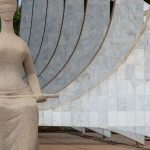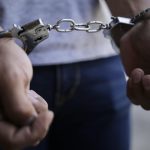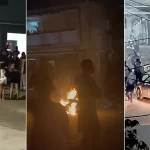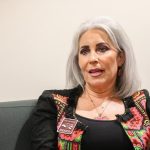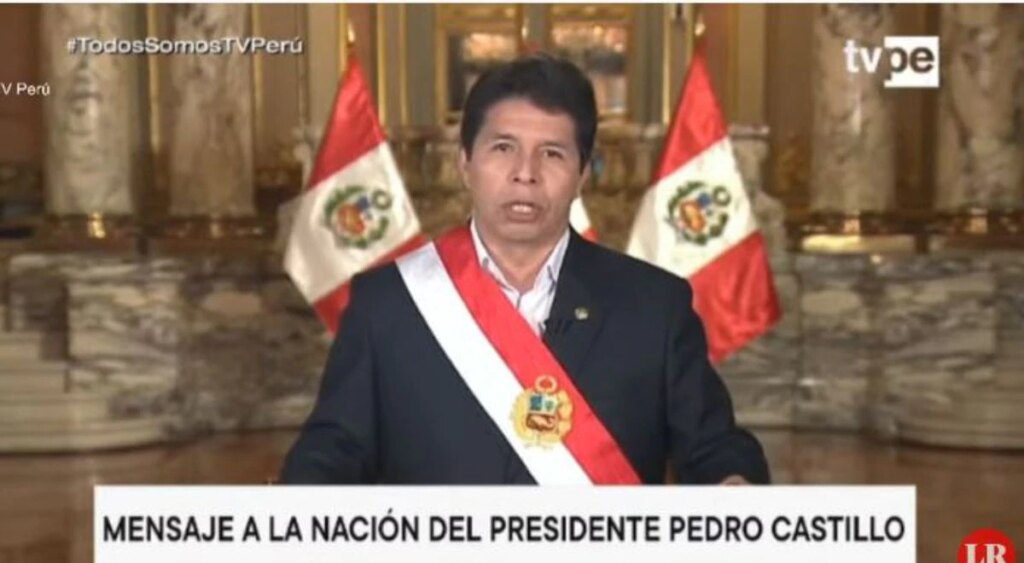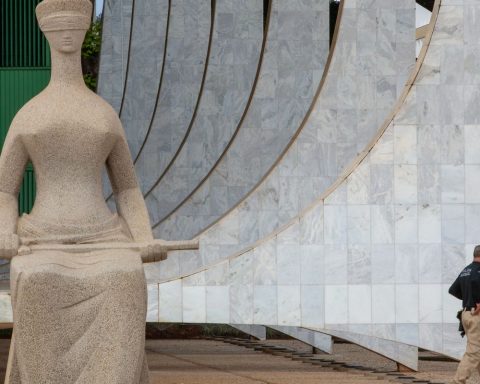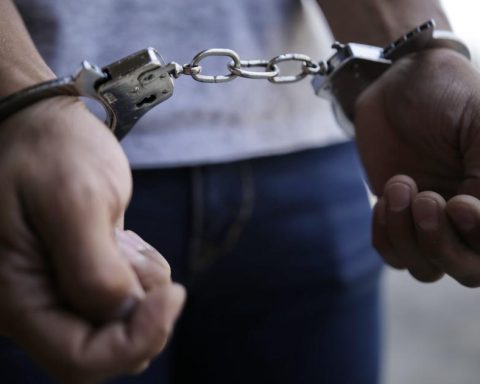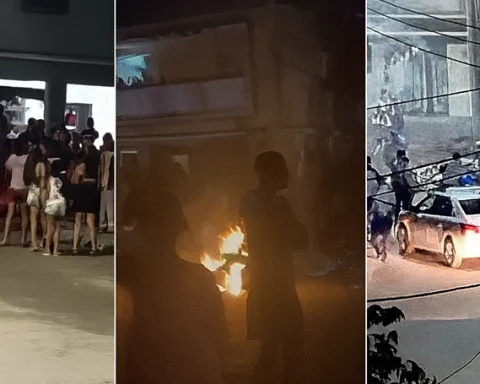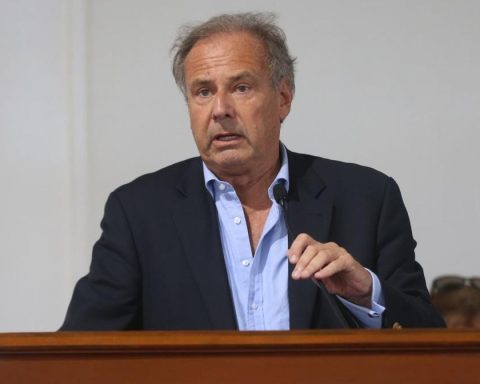77 years ago, on August 6 and 9, 1945, the United States completely destroyed the Japanese cities of Hiroshima and Nagasaki. The death toll of the tragedy was over 450,000 and survivors continue to suffer from radiation sickness.
Although both cities have already been rebuilt, their inhabitants continue to bear the weight of that terrible tragedy. The history of the atomic bombings of Hiroshima and Nagasaki and the memories of the survivors bring with them a deep debate that, for generations, has made experts question the need for a weapon as effective as it is lethal, capable of unleashing hell on Earth. .
The day time stopped
On July 16, 1945, American scientists working on the manhattan project They successfully carried out the first nuclear explosion in history at the ‘Trinity’ test in Alamogordo, New Mexico. With World War II still ongoing in the Pacific, preparations to use nuclear bombs against Japan moved forward.
On August 6, 1945, at 08:15, the first atomic bomb was dropped on the center of Hiroshima. Baptized as ‘Little Boy’this uranium bomb had never been tested before, but scientists were insurance that it would work. Likewise, Hiroshima was not chosen at random as the target of the first attack. That city met all the criteria to obtain the maximum number of victims and destruction: a flat place surrounded by hills and low and highly flammable buildings because they are mostly made of wood.
A clock that stopped at exactly 8:15 a.m. at the Hiroshima Peace Memorial Museum.
The attack completely leveled the city. Everything around the epicenter of the explosion instantly turned to ashes, and even on the walls of some houses were human silhouettes. The hands of almost all clocks in Hiroshima stopped at 08:15, the moment of the explosion. Some of them are collected in the Museum of Peace as exhibition objects. According to various estimatesin a matter of seconds between 80,000 and 140,000 people perished, while another 100,000 were seriously injured.
Three days later, on the morning of August 9, a second US plane took off from the air base on Tinian Island in the Pacific Ocean. The nuclear bomb it was carrying bore the code name ‘Fat Man’. This was a more sophisticated plutonium-based implosion bomb that had been tested in the ‘Trinity’ test. The main target was the city of Kokura. However, due to thick cloud cover, the aircraft’s crew opted for the secondary target: Nagasaki.
‘Fat Man’ was almost twice as powerful as ‘Little boy’, but the inaccuracy in aiming and the local terrain somewhat reduced the damage from the blast. Similarly, the effects of the bombardment were devastating: at the time of the explosion, at 11:02, 74,000 people died, another 75,000 suffered serious injuries. The number of victims of radiation sickness continued to grow in the following years.
The bombs did not end the war
The consensus view in the US for the past 77 years has been that the bombing of Hiroshima and Nagasaki was the only way to end World War II without an invasion, which would have cost hundreds of thousands of American and Japanese lives. The logic of this reasoning holds that the bombs not only ended the war, but they did so in the most humane way possible.
The US Joint Chiefs of Staff argued that no Japanese government had surrendered to a foreign power in the country’s 2,600-year history and no Japanese military unit had surrendered in the entire course of the Pacific War. Furthermore, the Allied demand for unconditional surrender led the Japanese to fear that Emperor Hirohito, whom many considered a deity, would be tried as a war criminal and executed. remember military historian Richard Frank of the Foreign Policy Research Institute.
“There was no predictable end point in this process. Absent organized capitulation, US (and allied) casualties could occur anywhere on a vast continuum from hundreds of thousands to well over a million,” Frank estimated.
The then US Secretary of War, Henry Stimson, justified the use of the atomic bomb arguing that in July 1945 there was no sign of “weakening in the Japanese resolve to fight rather than accept unconditional surrender.” Meanwhile, Washington planned to intensify its military operations and launch an invasion of the Japanese archipelago in November.
“We calculated that if we were forced to see this plan through to its conclusion, the main fighting would not end until the latter part of 1946 at the earliest,” Stimson wrote. “I was informed that such operations could cost more than a million casualties only to US forces,” he added.
Meanwhile, the renowned American physicist Karl Taylor Compton, CEO of President Truman on the use of the atomic bomb, defended that if this powerful weapon had not been used “there would have been many more months of death and destruction on an enormous scale.” Ultimately, US military experts agree in what the death of Japanese civilians was not considered as an end, but as a means.
However, critics questioned the morality and necessity of the bombing, arguing that the main reason for Japan’s surrender was the entry of the Soviet Union into the war on August 8, which changed everything for the Japanese leadership, who privately recognized the need to capitulate quickly.
“Overwhelming historical evidence from US and Japanese archives indicates that Japan would have surrendered that August, even if the atomic bombs had not been used, and the documents show that US President Harry Truman and his closest advisers knew this.” points Gar Alperovitz, Professor of Political Economy at the University of Maryland.
The Soviets invaded the Chinese region of Manchuria, occupied by Japan, at midnight on August 8. As predicted, this attack alarmed Japanese leaders, as they could not fight a two-front war.
“The Soviet Union will take not only Manchuria, Korea and Karafuto, but also Hokkaido. This would destroy the foundations of Japan. We must end the war when we can deal with the US.“, he claimed Japanese Prime Minister Kantaro Suzuki on August 10, 1945.
Although most Americans are not familiar with this history, the National Museum of the US Army in Washington recognize on a plaque at an atomic bomb exhibit that “the vast destruction caused by the bombings of Hiroshima and Nagasaki and the loss of 135,000 people had little impact on the Japanese Army. Nevertheless, the Soviet invasion of Manchuria changed their minds“.
The radiation footprint
After the war, during the American occupation, extensive reconstruction began in both cities. In Hiroshima it enacted a comprehensive planning plan in 1950 and the city quickly became an industrial center of the region. In Nagasaki, large parts of the historic city survived the war and would serve as a major draw for tourists. Both cities became spiritual centers of the movement to ban nuclear weapons. Also, the ruined hulk of the Hiroshima Prefectural Industrial Promotion Hall was designated a UNESCO World Heritage Site in 1996.
To the surviving victims of the bombing, known in Japan as hibakusha, the Japanese government promised them free health care for life. In 1947, the Atomic Bomb Victims Commission began conducting medical and biological research on the effects of radiation with numerous volunteer participants. More than 120,000 ‘hibakusha’ signed up for the project. The study yielded substantial data for those studying the long-term effects of radiation exposure.
“The use of nuclear weapons against Hiroshima and Nagasaki caused a unique humanitarian catastrophe in history“, declared this Tuesday the secretary general of the UN, António Guterres, in an act memorialduring which he warned that “today the prospect of a nuclear conflict has returned to the realm of possibility.”

View of the devastation caused by the atomic bomb that was dropped on Hiroshima, Japan on August 6, 1945.







